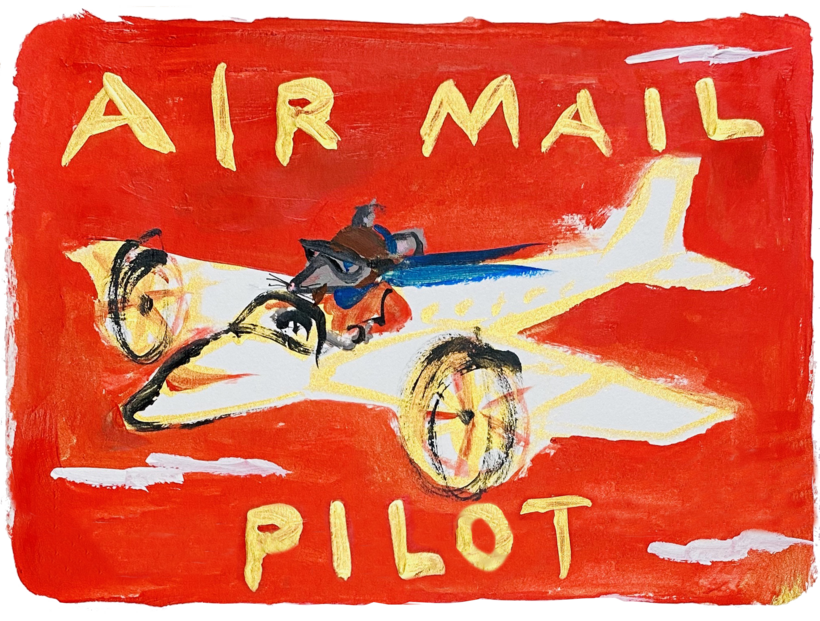Dressing the Part

Like many little girls, Arabella Duffy loves raiding the dressing-up box to look like a princess. But the eight-year-old’s penchant for a regal frock is not just for fun – she assumes the guise of historical figures to give lessons to other children in lockdown.
As well as Queen Victoria, Elizabeth I and Cleopatra, she has imitated wartime prime minister Winston Churchill in her five-minute classes, delivered to primary-school-age youngsters in videos posted on social media. She has nearly 14,000 followers on Instagram – and won support from grown-up historians too, such as classicist Mary Beard, who shared one of her lessons, and Dan Snow. At this rate Arabella, nicknamed Lou Lou, could soon be giving historian Lucy Worsley – known for donning period costumes in her TV series – a run for her money.
Arabella, who has also dressed up as a suffragette, a Tudor market vendor and her own teacher character ‘Miss Duffy’, said of her videos: ‘I enjoy doing them with my mum as it gives me a focus and something to do in the mornings. I just love learning and sharing it with people. Sometimes I even get to teach my mum new things she doesn’t know.’

The youngster, from Hampstead, northwest London, has also acted in West End musical Waitress and was the voice of Betty in CBeebies show Hey Duggee. She has always been homeschooled by her artist mother Sophy Robertson Smith, 54. They live with Arabella’s father Carey Duffy, also 54, a sales director for a maker of film and TV lenses.
Arabella researches the topics for her lessons from books. But when she played a Second World War evacuee, she based it on her grandmother June’s memories of the conflict. Miss Robertson Smith said: ‘She just wants to help share interesting facts she’s learnt. She’s just a regular kid who wants to make a difference. A lot of kids are struggling with anxiety because of the lockdown and this just helps.’
Miss Worsley, who is chief curator of Historic Royal Palaces, has also dressed up as Elizabeth I, as well as both Queen Victoria and Prince Albert in her show Royal Palace Secrets. The presenter has previously told how much she enjoys wearing historical costumes, saying it is ‘sometimes for serious intent, sometimes for frivolous’.
Sahara Salon

Marshmallow Masters

The “marshmallow test” is supposed to reveal a particular human skill: the ability to restrain impulses and delay gratification by choosing to wait for two sweets later rather than eat one immediately. Psychologists have claimed that it can predict who in a class of six-year-olds will go on to lead fruitful lives. But scientists have revealed that another member of the animal kingdom can be just as shrewd: the cuttlefish.
Instead of marshmallows, researchers used grass shrimp, a favorite of cuttlefish, and king prawn, which they eat but do not like as much. With a little training the cuttlefish demonstrated an ability to overcome immediate gratification in favor of a better but delayed reward. They spurned the prawn when they knew that a little patience would bring them shrimp.
“We used an adapted version of the Stanford marshmallow test,” Dr Alexandra Schnell, of Cambridge University, who led the study, said. “Cuttlefish in the study were all able to wait for the better reward.”

There were also signs that this ability to delay gratification was linked to how bright the individual cuttlefish was. Those that could wait the longest for their preferred meal also performed better at a learning task, an association that until now had not been seen in any creatures other than humans and chimpanzees.
In this second experiment, cuttlefish were trained to associate a visual cue with an edible reward. Then the situation was reversed, so the reward became associated with a different cue. “The cuttlefish that were quickest at learning both associations were better at exerting self-control,” Schnell said.
The ability to delay gratification was linked to how bright the individual cuttlefish was.
The findings are the latest to highlight the intelligence of cephalopods. A Roman observer in the 3rd century noted the “mischief and craft” of octopuses. And in 2016 the world marveled at Inky the octopus who, apparently bored with sitting in an aquarium in New Zealand, staged an elaborate escape via a drainage tube that led back to the sea.
So perhaps an experiment designed for children was never going to overwhelm a cuttlefish. Developed in the 1960s, the test involves putting a marshmallow in front of a child who is told that they can have a second one if they can go 15 minutes without eating the first. The adult directing the experiment then leaves the room.
Why cuttlefish might have evolved a capacity for self-control is not clear. Delayed gratification in humans may help strengthen social bonds, the researchers said. Waiting to eat so somebody else can have a meal first may benefit the species. Or perhaps it is related to tool-building, where animals must wait to construct a tool before they use it. But cuttlefish are not social animals and do not build tools. The authors suggest that delayed gratification may result from the animal’s need to camouflage itself. Schnell said: “They break camouflage when they forage, so are exposed to every predator in the ocean. Delayed gratification may have evolved so the cuttlefish can optimize foraging by waiting to choose better food.”

